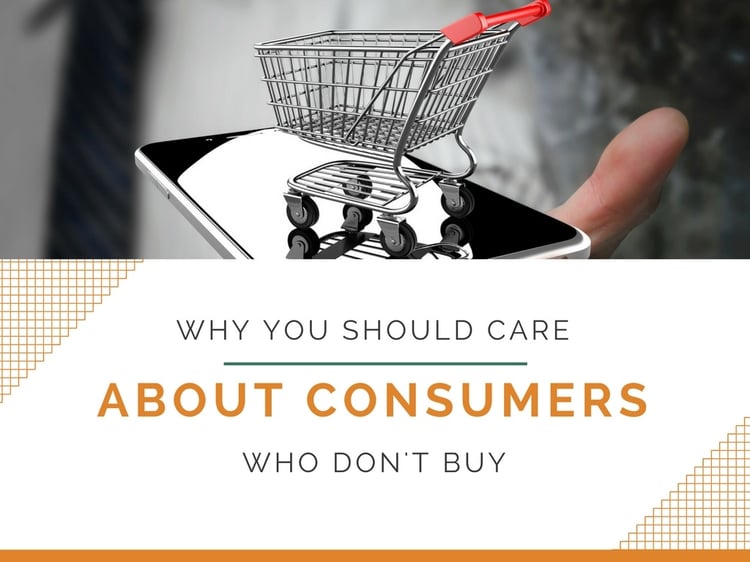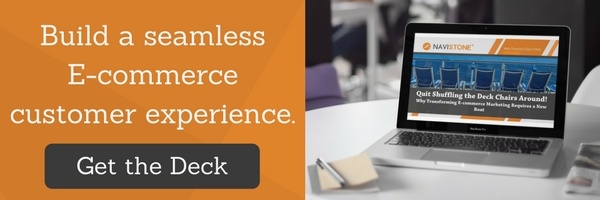Direct mail marketing is a tried and true method for reaching potential customers in the travel and tourism industry. Despite the rise of digital marketing channels,...

Marketing today revolves around the collection and effective use of data. While it’s commonplace to use the data of your known customers to your advantage, using unidentified visitor browsing data isn’t nearly as widespread. Understanding the behaviors of these previously unidentified visitors is just as important as understanding the data behind frequent customers. After all, understanding these consumer behaviors is the only way to turn these unknown viewers into paying customers.
Why You Should Care about the Consumers Who Don’t Buy
At its core, marketing doesn’t seem terribly complicated. Know your audience, give them what they want and exceed the expectations of your customers every time. It’s a formula that, while much easier said than done, is achievable if you have the right data. But with so much data available, it’s easy to get caught up in metrics that don’t help create a complete picture of the individual consumer.
At every consumer touchpoint, a decision is made. The consumer either chooses to continue down the path to purchase, or they decide not to. In the case of the latter, it’s important you understand why people make that choice – and that choice could be due to any number of reasons, from slow page load times to price of goods sold to a phone call that interrupted an online shopping trip. The motivation behind an individual’s decision not to purchase is as important as their decision to purchase.
Learning how to interpret unidentified browsing behavior, when all you seem to have is a fragmented data story, isn’t as hard as it first appears, and it’s only going to get easier in the future as emerging technologies make connecting a single user to multiple devices a reality rather than a wish.
The reality now is that nobody is as unidentifiable on the internet as they might think. A study by Princeton and Stanford universities suggests that it’s possible for analysts to figure out the identities of incognito web users more than 70 percent of the time – simply by analyzing public information from social media accounts. Since many people leave a considerable digital fingerprint on their social media accounts, it’s possible to gain in-depth knowledge about people who check out your site, but leave shortly afterward. This gives you the opportunity to build models around the types of people who are quick to consider other options. You can identify their genders, ages, preferences and shopping tendencies. From there, you can design and test new approaches to try to appeal to them, even though they leave your site without making a purchase or signing up for your email list.
But let’s say you don’t have the time, budget or technology to identify uknown browsers by their social accounts. Unnamed website visitor behavior is still incredibly valuable because that behavior leaves clues to what does and doesn’t motivate a consumer to make a purchase, which helps you improve the overall customer experience and convert them from an unknown to a known.
How to Connect the Dots to See Consumer Intent
Not everyone who browses unidentified and neglects to make a purchase is disinterested in your brand. What you see as unnamed browsers are really potential customers conducting research on your site. These individuals may well complete purchases at brick-and-mortar locations, or they may buy from larger retailers like Amazon. So what influenced them to research the product on your site but not take that final step to purchase? The clues lie in consumer data.
Before we get to that let’s take a step back. Data is both the answer and the problem with creating a single consumer view. Consumer data is only as useful as the consumer insights gained from it. Understanding why an individual browses your website is the real power behind data. Calculating your email conversion rate is easy; it’s something entirely different to understand the logic of someone who opens an email about a flash sale, browses a few items on your site and leaves without buying anything.
That’s where understanding your unidentified visitors can really pay off. As important as it is to know and satisfy your current customers, it’s hard to grow your audience without understanding how consumers behave and how an individual consumer’s actions reveal their unique pain points, needs and what motivates them. When you understand why an individual is online, you can spot browsing patterns and begin to comprehend how their actions create a bigger picture, and corresponding opportunity.
Consider the case of two unknown browsers on an E-commerce site. The first arrives at a product page via a Google search, then leaves without any further site activity after spending about a minute on the page. The second viewer also arrives after a Google search, but this viewer looks at multiple pictures of the product as well as reviews of the item, then goes to your Frequently Asked Questions page and clicks a link that provides information about shipping costs. Neither visitor bought anything, and they aren’t previous customers. Their identity is unknown up to this point. One of the two left strong signals they were interested in making a purchase, whereas the other individual appears to have moved on to other things.
Of the two, where should the company focus its energies? The answer: both. The person who showed signs of intent should be considered a candidate to make a purchase. The person should be automatically retargeted, since odds are good they will buy at some point. Because this person showed a lot of interest by viewing multiple pages, a retargeted postcard (which can be sent to unidentified browsers) with an in-store offer or free shipping offer could be just the promotional piece they need to become a customer.
However, the data from the browser who came and quickly left should also be considered. Consider these factors when trying to understand this previously unidentifiable browser’s behavior:
- What keyword brought them to the site? If your metadescriptions, product descriptions and/or content on the page don’t match the initial search phrase, the person would have quickly grown frustrated and looked elsewhere.
- How does your page load – in all browsers and on desktop and mobile? Because this person stayed for at least a minute, you can safely assume your page loaded, and within normal rates. But don’t stop there. Look at how quickly the page loads if ads slow page load times, or if autoplay videos are disrupting the experience, or if the page isn’t loading correctly for mobile.
- Is the page easy to understand and follow? Walk through the page as a consumer to see if there are any confusing navigation, cluttered pages, outdated design, or a difficult check-out process, especially if you see specific pages that have lower engagement.
Optimizing the Customer Experience to Make the Unknown Known
The ultimate goal of any marketing initiative is to make money. It might not seem like it at first, but the exercise of analyzing the data of unidentified Web browsers can actually lead to significant revenue down the road.
At the end of the day, businesses thrive on creating new customers. That’s why it’s so important to focus on previously unidentified viewers. Remember, the idea is to make sure these people aren’t unknown for long. They might come across your site innocuously, not ready to move forward with a purchase. But you can at least plant a seed that encourages them to come back.
One of the ways you can do this is by presenting all of your visitors — known and unknown — with a top-notch customer experience. The more you know about the people who come across your site without the intent to buy, the more you can do to provide a presentation that makes those people more inclined to buy from you in the future. Plus, if your E-commerce site provides consumers with a truly unforgettable customer experience, they’ll be more willing to trust you with their data when they’re ready to buy.
It’s true that a big part of the customer experience in 2017 is hyper-personalization — something that can be difficult when you’re dealing with unidentified browsers. However, that’s not to say individualization is impossible. You already have three very powerful weapons at your disposal:
- Any site activity for that individual
- Information regarding how that person arrived at your website
- The type of device they’re using
You can use all of these data points to create general templates for the customer experience geared towards unnamed viewers, all to entice that viewer to become more than an unidentifiable face in the crowd. After all, building trust with the consumer is why individualization is a powerful marketing tactic.
With such emphasis placed on consumer behavior data, it’s up to savvy marketers to think creatively about how to use it to their best advantage. Incorporating the insights derived from unnamed web visitors is a great way to get a full profile of your audience, one that goes beyond those who have signed up for your site or made previous purchases. It’s only by going the extra mile that you can convince those people to take the next step towards making a purchase and no longer being unidentified.

